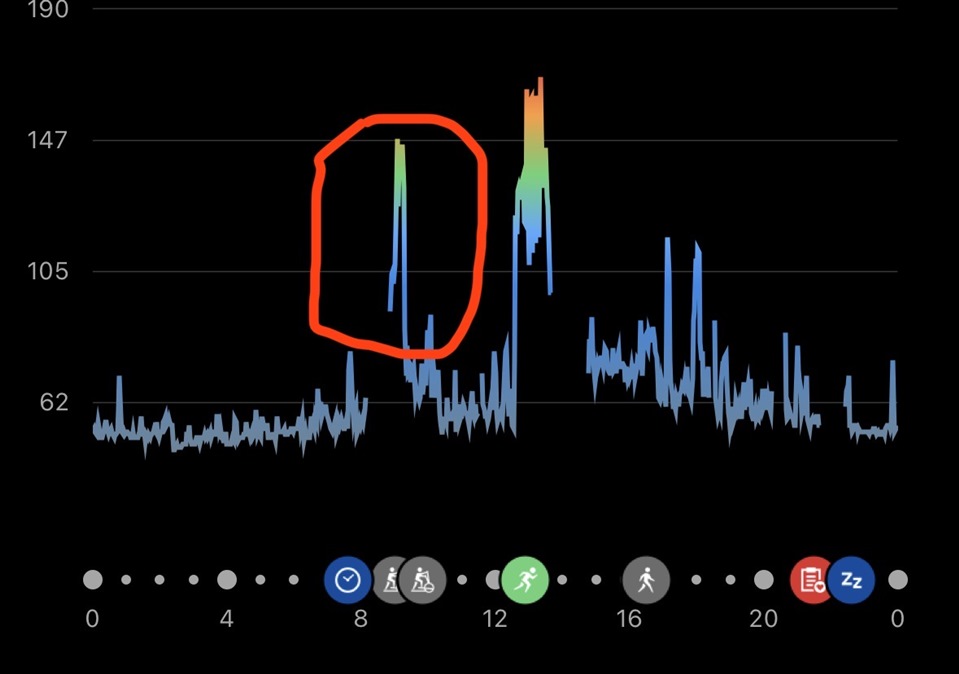Good morning,
I’m coming in hot today, so let’s get straight to the point.
The algorithm Garmin uses to handle heart rate data has been terrible for quite some time now. And I’m not even talking about when I’m working out or recording an activity — I mean when I’m simply walking to the supermarket or taking my kid to school. Those everyday walking readings are a disaster: completely absurd measurements. Here’s one example (I have may more) — the watch thought I was doing an elliptical workout with a heart rate close to 150 bpm, when I can guarantee it never went above 90.

It’s sad, really. I even did a stress test where I reached 170 bpm for about 10 minutes, and the Garmin didn’t even go past 100 (obviously, I didn’t start an “activity” recording).
I’ve had two watches with the Gen 5 heart rate sensor — the Epix Pro, which worked fine for the first year (no random spikes, no weird peaks), until it all started going wrong around firmware version 16.16 or so. And now the FR970, which has had issues from day one.
Then you contact support, and nothing changes. The usual “we’ll pass it to the team” response — and a year later, still the same. It’s an absolute embarrassment, especially for watches this expensive.
I’m fully aware of the limitations of wrist-based sensors — that’s why I use a COROS arm strap on my bicep. But obviously, not all day long. Still, there’s a big difference between “limited” and “just making things up.” Apple and Huawei handle this far better. If the data can’t be measured properly, just don’t show it at all.
And no, it’s not about the watch fit (tested with both nylon and silicone bands, snug with no movement, two fingers above the wrist bone), not about skin tone (light, no tattoos), and not about the weather (10–12°C). Yes, I’ve got a slim wrist — but that’s no excuse for completely made-up readings.
Can we really trust any of the other data? My sleep HR, HRV, and so on?
Let’s see if the new COROS Pace 4 ends up being the solution instead of sticking with a Forerunner — or if it’s time to move to the Apple Ultra. Sure, its battery doesn’t last as long, but at least the data is reliable, and that’s what matters. I’d rather charge my watch more often than rely on nonsense metrics.
Could this be the beginning of the end for Garmin, like Nokia once was? Too much confidence in their legacy and brand, while competitors are catching up fast. If things don’t change soon, it’ll be too late. And let’s not even get started on the maps — you switch from MIPS to AMOLED, keep the same RAM and processor, and end up with sluggish performance and crashes when calculating routes (I’d rather it not last forever if it’s that slow).
Please redirect the business properly, listen to people, sort out your issues, and if you raise prices, do so because you are improving, not because you are going backwards. The management of software and updates on devices that should last for years is disastrous.
Best regards, from a once-loyal customer who expected better.


